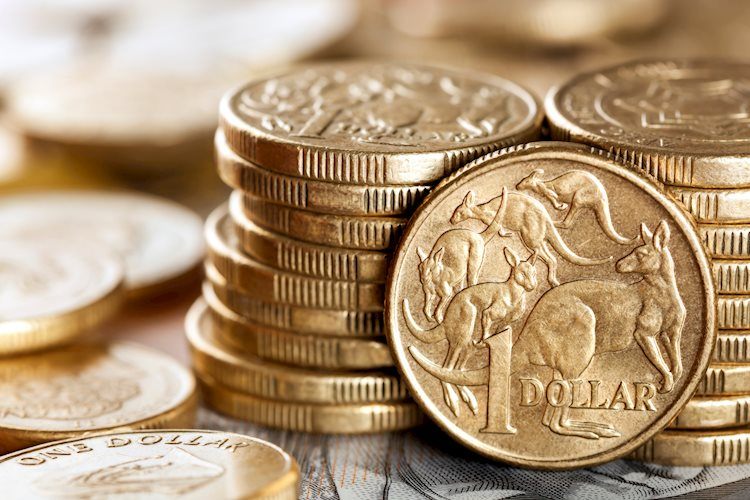AUD/USD pulls back from YTD top amid modest USD uptick, trades around 0.6880 area
- AUD/USD retreats after touching a 19-month peak amid reviving USD demand.
- Global economic woes and geopolitical risks benefit the safe-haven Greenback.
- The divergent Fed-RBA policy outlook limits any meaningful slide for the pair.
The AUD/USD pair struggles to find acceptance above the 0.6900 round figure and retreats a bit from its highest level since February 2023 touched earlier this Wednesday. The intraday descent drags spot prices to the 0.6880-0.6875 region, or a fresh daily low during the first half of the European session and is sponsored by a modest US Dollar (USD) uptick.
Despite the latest optimism over China's new stimulus measures, lingering concerns about a global economic downturn and persistent geopolitical risks temper investors' appetite for riskier assets. This is evident from a weaker opening across the European equity markets, which assists the safe-haven USD to rebound from the vicinity of the YTD low touched last week and drives flows away from the risk-sensitive Aussie. That said, a combination of factors should continue to act as a tailwind for the AUD/USD pair and help limit deeper losses.
The markets have been pricing in a greater chance that the Federal Reserve (Fed) will announce another 50 basis points (bps) rate cut in November. This marks a divergence in comparison to the Reserve Bank of Australia's (RBA) hawkish stance and should lend support to the AUD/USD pair. In fact, the RBA reiterated on Tuesday that policy will need to be restrictive until confidence returns that inflation is moving sustainably towards the target. Moreover, RBA Governor Michele Bullock stated that the recent data has not significantly influenced the policy outlook.
Meanwhile, official data released earlier today showed that the headline Australian Consumer Price Inflation (CPI) dropped in August to its lowest level since early 2022, though the decline in core inflation was less pronounced. The data was not enough to justify interest rate cuts by the RBA in the near term, which, in turn, suggests that any subsequent decline in the AUD/USD pair might still be seen as a buying opportunity and remain cushioned. Traders might also prefer to wait for Fed Chair Jerome Powell's speech on Thursday and the US PCE Price Index on Friday.
US Dollar PRICE Today
The table below shows the percentage change of US Dollar (USD) against listed major currencies today. US Dollar was the strongest against the Japanese Yen.
| USD | EUR | GBP | JPY | CAD | AUD | NZD | CHF | |
|---|---|---|---|---|---|---|---|---|
| USD | -0.05% | 0.26% | 0.53% | -0.00% | 0.15% | 0.34% | 0.39% | |
| EUR | 0.05% | 0.31% | 0.56% | 0.04% | 0.20% | 0.41% | 0.44% | |
| GBP | -0.26% | -0.31% | 0.25% | -0.27% | -0.11% | 0.04% | 0.14% | |
| JPY | -0.53% | -0.56% | -0.25% | -0.55% | -0.38% | -0.19% | -0.14% | |
| CAD | 0.00% | -0.04% | 0.27% | 0.55% | 0.17% | 0.37% | 0.41% | |
| AUD | -0.15% | -0.20% | 0.11% | 0.38% | -0.17% | 0.21% | 0.27% | |
| NZD | -0.34% | -0.41% | -0.04% | 0.19% | -0.37% | -0.21% | 0.03% | |
| CHF | -0.39% | -0.44% | -0.14% | 0.14% | -0.41% | -0.27% | -0.03% |
The heat map shows percentage changes of major currencies against each other. The base currency is picked from the left column, while the quote currency is picked from the top row. For example, if you pick the US Dollar from the left column and move along the horizontal line to the Japanese Yen, the percentage change displayed in the box will represent USD (base)/JPY (quote).
Forex News
Keep up with the financial markets, know what's happening and what is affecting the markets with our latest market updates. Analyze market movers, trends and build your trading strategies accordingly.
